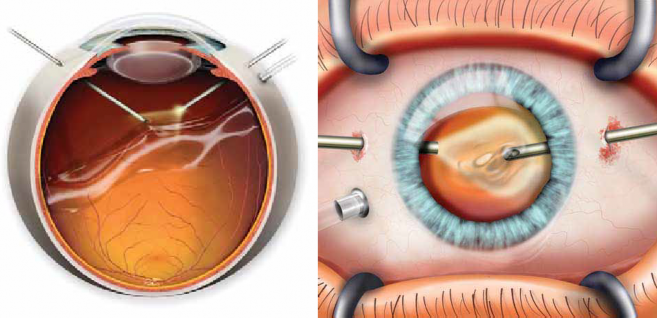Vitrectomy Surgery

During a vitrectomy surgery, three tiny incisions are made in the white part of the eye, which is called the sclera. Thin needle-like instruments are inserted through these small incisions to access the back part of the eye where the vitreous gel and retina are located.
Vitrectomy surgery is a common surgical procedure performed by retinal surgeons. It is used to treat or repair a variety of diseases and conditions of the retina. The surgery is performed using a high-powered microscope in an operating room, either at a hospital or ambulatory surgery center. The patient is partially sedated and anesthetized with a local anesthetic for the surgery. However, total (general) anesthesia may also be used when necessary.
With the patient lying on his/her back, three (3) small incisions are made in the white part of the eye. Small instruments are inserted through these incisions to perform various tasks such as laser treatment, removal of blood, and excision of scar tissue. These instruments are small enough that the eye seals itself naturally when they are removed.
The surgery can take anywhere from 30 minutes to several hours depending on the nature of the condition and the complexity of the operation. A variety of retinal diseases can be treated with vitrectomy surgery. A partial list includes retinal detachment, diabetic retinopathy, macular hole, and epiretinal membrane.
Patients typically go home on the same day of surgery, with the eye patched overnight. Topical eye drops are started the day after surgery and are used for several weeks postoperatively to provide comfort and aid in the healing process.
